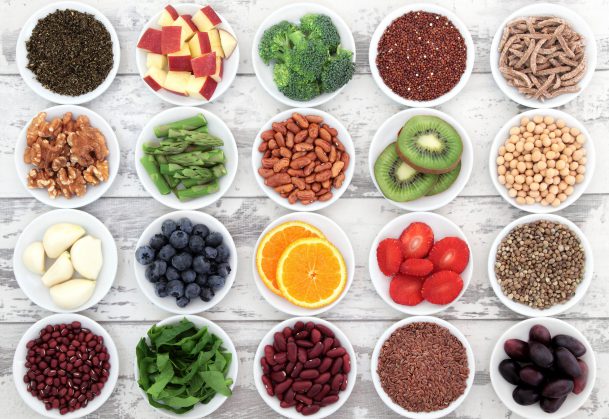Hippocrates said “Let food be thy medicine, and medicine be thy food.” Modern translation: Eat functional foods.

Though the term “functional foods” hasn’t entered mainstream foodservice vernacular yet, much of the fare it refers to is ubiquitous: think fish, olives, blueberries, honey, whole grains, chocolate and coffee. In addition to providing nutrients, functional foods provide additional health benefits—reducing inflammation, improving heart and brain health, or promoting relaxation, for example. Fortified and fermented foods such as milk, kimchi and kombucha also fit within functional foods. According to Datassential, 90% of consumers are interested in functional foods, with 61% being very or extremely interested. The same study also showed that 78% want foodservice operators to offer more food & beverages with functional benefits.
According to Grand View Research, the global functional foods market was estimated at 161 billion dollars in 2018, and a compound annual growth rate of 7.9 percent is forecast for 2019–2025. As consumers continue to become more health-conscious and diets such as keto and paleo increase in popularity, functional foods are poised to become the next frontier in foodservice. Here are four things to know about these everyday, yet high-performing foods.
- You’re likely serving functional foods already
Touting the benefits of phytonutrient-rich fruits and vegetables is nothing new: we used to call them “superfoods.” Tomatoes—a base ingredient for pizza and pastas—are rich in lycopene, which has been linked to many health benefits including reduced risk of heart disease and cancer. You may be serving avocados, which contain healthy Omega-3 fatty acids, on sandwiches or salads. And functional foods are breakfast all-stars: oatmeal helps lower cholesterol and blood pressure; grapefruit aids weight loss and reduces insulin resistance; and blueberries, strawberries, and blackberries offer a range of antioxidants, which fight free radicals as we age. According to ingredients company Kerry, the top five ingredients perceived to deliver these benefits are omega-3s, honey, coffee, probiotics and green tea. - Diners are willing to pay more for functional foods
Consumers are willing to pay more for functional foods—including foods high in fiber, protein, whole grains, or fortified with calcium, vitamins or minerals--that can either reduce disease and/or promote good health. They will also pay more for “better for you” products in general, including those that are free of hormones, antibiotics or genetically modified ingredients. Try pairing Farm Promise® No Antibiotics Ever pork, which is high in protein, with functional foods like apples, blueberries, or an orange-honey glaze. - The meaning of “healthy” has evolved
In the not-so-distant past, health food advertising centered around touting low calorie and fat-free foods. Today, consumers are not only concerned with nutritional benefits, but the overall economic, social and environmental impact of the food they consume. They want to know where it was produced, by whom, and what, if any, additional health benefits can be derived from it. Highlighting nutrient-dense foods produced by local farmers is a way for foodservice providers to demonstrate their commitment to functional foods, the environment (since local foods have a smaller carbon footprint) and supporting local entrepreneurs—a triple win for conscious consumers. Farm Promise® for instance works with local family farms who value sustainability, stewardship and the ethical treatment of their animals—providing your guests with high-protein, no antibiotics ever pork with a strong transparency story behind it. - Functional foods are an opportunity to educate diners
Chefs and foodservice operators are in a prime position to help educate diners about the health benefits of functional foods. After all, your guests are there for a meal, so you already have a receptive audience. In fact, Datassential found that 66% of consumers more likely to purchase a food or beverage item featuring a functional health benefit that is accompanied by scientific data or a scientific claim. Chartwells Higher Education Dining Services uses functional foods in recipes at 280 college campuses across the U.S. The goal: empower the foodservice team with knowledge that helps support the lifestyle goals of students by highlighting the intentional use and health benefits of functional foods. Students can enjoy meals featuring functional ingredients in their dining halls, and some grab-and-go items at on-campus markets feature educational labeling.
Functional foods may sound like a fancy term for foodservice, but the concept is very simple. These common foods can be used with purpose to reach health-conscious guests. Foodservice providers can be an integral part of educating the public about the key benefits in the food they’re serving.
This article is brought to you by 
At Farm Promise®, we believe good comes from good. It’s rooted in our values and drives our commitment to delivering no-antibiotics-ever, ethically raised pork from American family farms. We’re putting better food within reach for you and your customers, to ensure there’s goodness they can taste in every bite.


